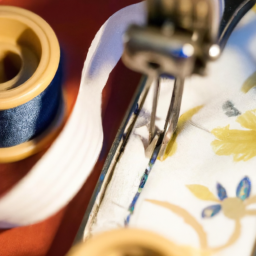
The History of Hand Sewing

Hand sewing, one of the oldest textile arts, is believed to have originated thousands of years ago. While the precise origin remains unknown, archaeological discoveries suggest that hand sewing has been practiced since the Paleolithic era.
Early sewing needles discovered in ancient sites indicate that our ancestors used bone, ivory, or metals like copper and bronze to create basic tools for sewing. The invention of the eye of the needle made threading easier and further advanced the art of hand sewing.
Throughout history, hand sewing has played a crucial role in the development of civilizations. In ancient Egypt, for instance, finely crafted garments and decorative pieces bore evidence of intricate hand sewing techniques. The construction and embellishment of elaborate clothing items showcased the Egyptians’ advanced skills in this craft.
Ancient Greece and Rome also placed great importance on hand sewing. The garments produced during these periods were often tailored and embellished through intricate stitching. The sewing techniques of the time were passed down from one generation to another, ensuring the continuity and refinement of this art form.
During the Middle Ages and the Renaissance, hand sewing was further developed and honed. The growth of trade during this period led to the introduction of new materials, such as silk and fine fabrics, allowing artisans to showcase their skills through exquisitely embroidered and embellished garments. Intricate details and elaborate patterns became the hallmark of the hand-sewn items produced during this era.

The Industrial Revolution in the 18th century marked a significant turning point in the history of hand sewing. Advancements in machinery brought about mass production techniques, reducing the need for extensive hand sewing. However, hand sewing maintained its place among artisans, who continued to create unique and exclusive pieces.
In recent times, while machine sewing has dominated the textile industry, hand sewing has experienced a revival. Crafters and enthusiasts recognize the value of hand-sewn items, appreciating the skill, attention to detail, and craftsmanship they embody. Hand sewing provides a sense of creativity, mindfulness, and connection to the past.
As we celebrate the rich history of hand sewing, it’s important to acknowledge the impact this ancient craft has had on our lives. From functional garments to intricate works of art, hand sewing has shaped cultures, preserved traditions, and continues to inspire generations of sewers and artisans worldwide.

Hand sewing has truly stood the test of time. Whether it be as a practical skill or a creative outlet, the art of sewing by hand will always hold a special place in our hearts, reminding us of our shared heritage and the remarkable stories woven with each stitch.




